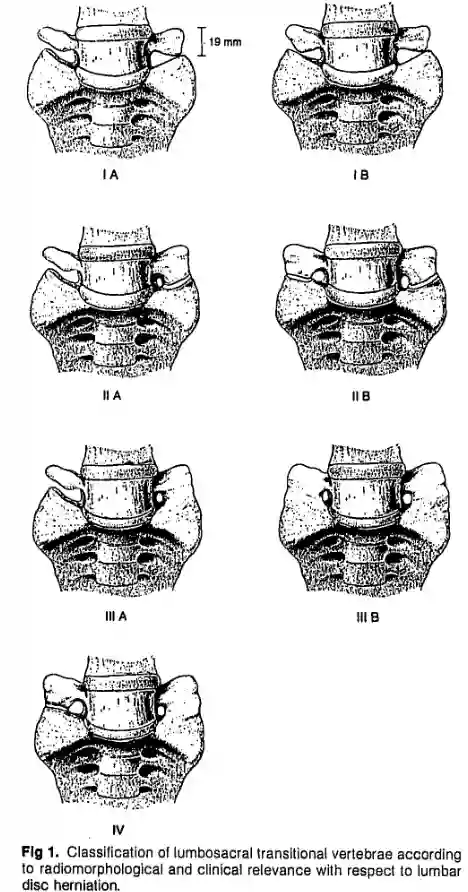Castellvi classification
Last edit by Alaric Steinmetz on
The Castellvi classification is used for the categorization of lumbosacral transitional anomalies and was published in 1984 by Castellvi et al. [^1].
Classification
Castellvi Type | Denotation | Description |
Type Ia | Unilateral dysplastic transverse process | This type represents a unilaterally pronounced transverse process in triangular form with a width of at least 19 mm. |
Type Ib | Bilateral dysplastic transverse process | This type represents a bilaterally pronounced transverse process in triangular form with a width of at least 19 mm. |
Type IIa | Unilateral incomplete lumbarization/sacralization | In this type, a pronounced transverse process is present unilaterally, which follows the contour of the wing of the sacrum. This type is considered incomplete because a diarthrodial joint seems to exist between the sacrum and the transverse process. |
Type IIb | Bilateral incomplete lumbarization/sacralization | In this type, a pronounced transverse process is present bilaterally, which follows the contour of the wing of the sacrum. This type is considered incomplete because a diarthrodial joint seems to exist between the sacrum and the transverse process. |
Type IIIa | Unilateral complete lumbarization/sacralization | This type appears the same as Type II with the exception that there is no diarthrodial joint between the sacrum and the transverse process, but a unilateral ossification has occurred. |
Type IIIb | Bilateral complete lumbarization/sacralization | This type appears the same as Type II with the exception that there is no diarthrodial joint between the sacrum and the transverse process, but a bilateral ossification has occurred. |
Type IV | Mixed | Patients with this type exhibit a Type II anomaly on one side and a Type III anomaly on the other side. |
Illustration

